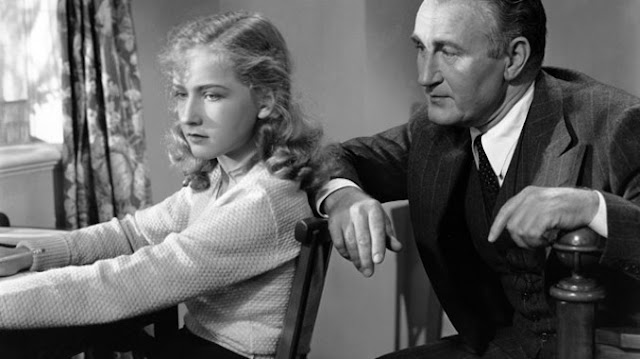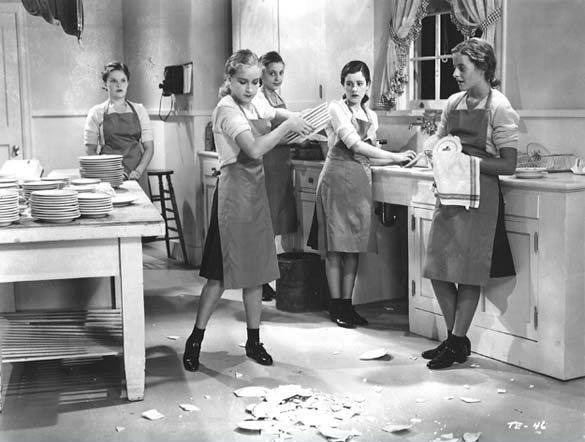A Story of Hollywood and the Second World War
by Mark Harris
Penguin Press
511 pages
February 2014
Amazon - Barnes and Noble - Powells
World War II was over and director John Huston was heading home. The army had one more assignment for him before he repatriated to good old Hollywood. They needed him to make a documentary about shell shocked servicemen being treated at a psychiatric ward. With soldiers coming back home and some dealing with serious mental trauma, the army was anxious to show employers across the nation that these men were treatable and would make fine employees. Propaganda films during the war became “a matter of strategic necessity” and this didn’t change when things were winding down. Huston was excited to show a reality of war that had been swept under the rug. The army’s vision of The Returning Psychoneurotic because Huston’s vision of Let There Be Light. Huston spent three months filming psychologists working with patients at Mason General Hospital. He had unfettered access and countless hours of precious footage. Once it was filmed, edited and in the can, a premiere at MoMA in New York City was arranged. At first the army approved the final result. But then they urgently tried to supress it. First they said they didn’t have music copyright permission for public screenings. Then they said the releases the soldiers signed were not legally binding. Even though Huston ended the film on an uplifting note, the army wasn’t ready for the public to see what Huston wanted them to see. Let There Be Light was supressed for 35 years. Huston fought for decades to have it released and finally got his wish when Vice President Walter Mondale gave his approval in 1980.
“The men were seeking adventure, but more than that, they were reaching for relevance in a world that had become rougher and more frightening than anything their studio bosses would allow them to depict on film.” – Mark Harris
The story of Huston’s Let There Be Light is one of many stories contained in Mark Harris’ book Five Came Back: A Story of Hollywood and the Second World War. Before the United States was involved in the war, there was an understanding that the film industry would be a crucial ally in building pro-War sentiment with the general public. After the attack on Pearl Harbor, five Hollywood directors enlisted and lent their talents as filmmakers to capture scenes of the war for the folks back home. These included John Ford, William Wyler, John Huston, Frank Capra and George Stevens. Harris follows their stories from just before the war, through to their assignments on the battle field and their eventual return to Hollywood. Told in chronological order the narrative intertwines their stories to tell the bigger story of WWII.
Anyone with an interest in 1940s film will be fascinated by how the war influenced pictures including feature films but also documentaries and shorts. Many films are discussed at length and what’s particularly fascinating is how the director’s involvement in the war affected their films. Did you know Frank Capra wanted to make Arsenic and Old Lace so his family could have some income while he was away? Or that Harold Russell was first part of William Wyler’s Diary of a Sergeant before he was added to The Best Year’s of Our Lives? Or that George Stevens witnessed the horrors of the concentration camps and after that couldn’t bring himself to make comedies in Hollywood?
“As long as they lived, the war lived in them.” – Mark Harris
 |
| William Wyler (left) |
 |
| George Stevens (center) |
 |
| John Ford (left) |
 |
| John Huston (second from left), Frank Capra (right) |
Films discussed at length include Meet John Doe (1941), Mrs. Miniver (1942), The More the Merrier (1943), They Were Expendable (1945), The Best Years of Our Lives (1946), It’s a Wonderful Life (1946), The Treasure of the Sierra Madre (1948) and more. Then there are the documentaries that brought home the story of the war. These included Capra’s Why We Fight series and The Negro Soldier, Huston’s The Battle of San Pietro and The Report from the Aleutians, Ford’s The Battle of Midway, Stevens' Nazi Concentration Camps and Wyler’s The Memphis Belle: A Story of a Flying Fortress and others.
Mark Harris’ book is a result of five years of archival research and it shows. It’s incredibly detailed and while it’s not overly long it does take quite a bit of time to read. Mostly because of it’s structure and how much information is packed in its pages. I’m fascinated by this era so it was essential that I read Five Came Back. The book inspired a Netflix mini-series which I’m keen to watch. It does help to have seen some of the films and documentaries mentioned in the book. Many of the docs are available on YouTube including Huston’s Let There Be Light which I highly recommend you see and have included below.
Five Came Back is a fascinating book about Hollywood directors contributing to the war effort during WWII and how their experiences affected them.
This is my fourth review for my Summer Reading Challenge.





























